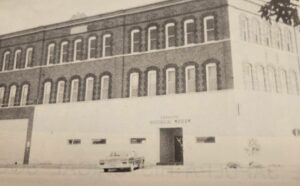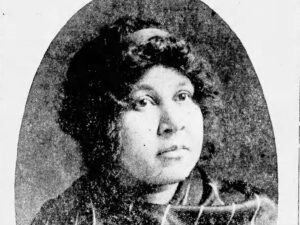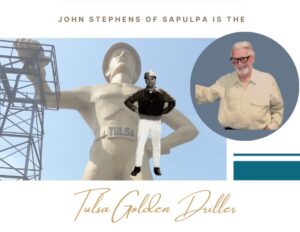Rachel Whitney, Curator
Sapulpa Historical Museum
In 1910, Sapulpa was to have its first park. The Wells Packing Company had a small lake on its site and was cleaning it and the area around it for the public’s use. People were already using it for swimming and the company planned on building a bathhouse and a fishing dock. Roads were to be built for better access to the park.
Swimming holes were exactly that, lakes and ponds. Building a public swimming pool attraction, however, didn’t come around for another decade.
By 1915, people were already going out to the water treatment plant and using it as a park or picnic grounds. The City stated that it had no funds to greatly improve the grounds. The previous year, the City had installed flower beds, a walkway, and two fountains. The town still had hope that a public swimming pool could be built in the near future.
Mid-July in 1917, a survey on the southeast corner of the new fair grounds had been made. It had been determined that the ground had “an almost perfect rock base.” The location was on a slope and would make it a perfect spot for a public swimming pool. City Engineer, Whittlesey, would rush the completion of the pool and the pipe water to the facility. Plans were for the pool to have a constant stream of water; the older water would be dispensed with (further research has shown the pool was never built).
Two years later, in the summer of 1919, Don McMasters from the Rotary Club announced their project to build a wading pool. It would be located on the northeast corner of Bryan and Main Street. The pool would be complete by mid-August.


That same year, the City Commission had also been considering constructing a public swimming pool at the water treatment plant. The concrete pool would be 100 feet by 50 feet with a depth of 18 inches to 6 feet. Bath houses with showers were to be built; and the pool would be heated (This pool was never completed).
The following year, on July 13, 1920, the City’s wading pool for small children on S Poplar, between Lincoln and McKinley, was completed. The pool’s depth was 12 to 24 inches, making it suitable for small children. The water would be changed every day, the article stated.
The City Commission approved the plans presented by the Park Committee. Joe Gambill said all the parks should be given Native American names in order to preserve their “historic grandeur.” The 25 acres at the treatment plant would be separated from the lake by a concrete wall and a swimming pool would be built. Sunset Hill would be used as a driving park. The fairgrounds would be used for an athletic and recreation park. The two acres at Bryan St would be used as a wading pool and community center. Moccasin Tracks would be used as a “lookout park” or a scenic view.
In the summer 1921, the Park Board had received various types of equipment for several parks. They were distributed to several parks around town. One was at Sugar Loaf Hill and another was in the North Heights area, which had a small wading pool (In the research, the exact location in North Heights was never found, but it was either on the Garfield School property or just across the street to the north of the school).
By the end of 1921, the Kiwanis Club announced that they would build a swimming pool for girls at Thompson Park. The Boy Scouts were also planning to build a bath and boating house at their camp, west of town (The exact location and existence of the pool was never confirmed).
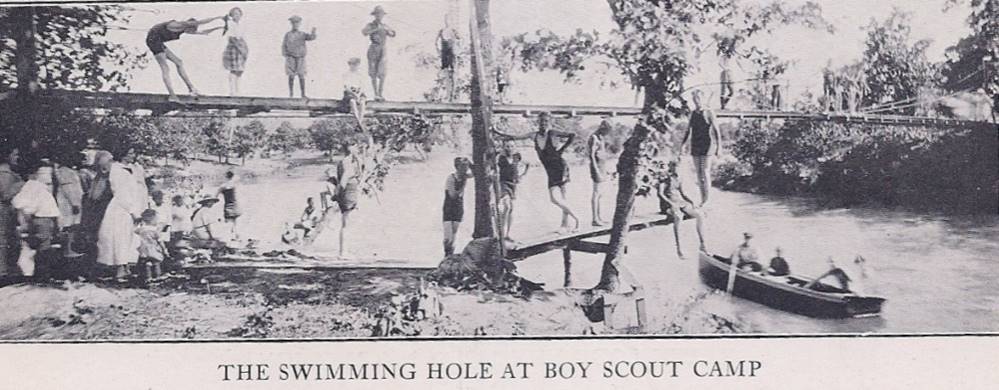
On July 8th, 1924, the Park Board recommended that the City purchase the 90 acres along Rock Creek, west side of town. They had secured an option to by this land at $250 an acre. “Everything necessary for a beautiful and useful public park is found, providing facilities for bathing and boating, an athletic field, tennis courts, golf course, beautiful and abundant shade and soil that is adaptable to the growing of flowers and shrubbery.” The Commissioners took no action on the recommendation but did instruct the Board to purchase the small tract on Main and Bryan Streets that had been used as a small wading pool.
The Park Board later that summer met again with City Commissioners. The Board recommended buying lots on S Poplar, buying the site for two wading pools. It was voted down because the price was too high.
The next year in 1925, the Parks Board was able to purchase two lots around the 1200 block of E McKinley for a small park and wading pool. The wading pool on E McKinley was under construction and had plans to beautify the area. Plans were also discussed to build a similar lot in North Heights.
By the end of 1925, the City Commission passed an ordinance prohibiting bathing (swimming) in its lakes. The State Health Department had recommended this.
On July 4th, 1928, Dixieland Park, located two miles west of town, was to have its formal opening after being closed for improvements. The park had a swimming pool of 100 feet by 160 feet. The pool was spring fed.
Two years later in summer 1930, the wading pool on E Dewey was dedicated before a crowd of some 400 people. Mr and Mrs Frank Reed of Neosho, MO, were the guests of honor. The pool in Sapulpa was one of 30 the couple had built in Oklahoma, Kansas, and Missouri. The pool was named Frank L Reed Park. The Business and Professional Women’s club had built the bath houses. With this ceremony, ice cream was served, and over 400 gallons of it was devoured.
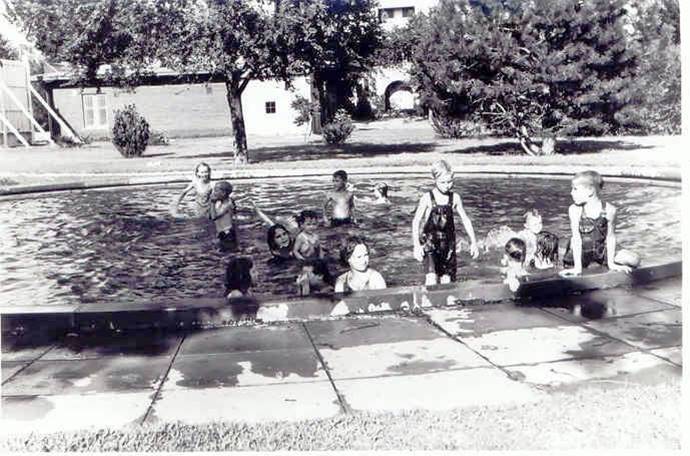
In Sapulpa, on July 19, 1946, it was announced from P.J. McAlpin, the President of the Colored Chamber of Commerce, said that the first African-American wading pool was complete in town. It was hooked up to the city water. The Rev. E. Shaw had been in charge of building the 35 feet by 35 feet pool. Surrounding the pool were 100 Chinese Elms, 27 Evergreens, and a lane of Irises. The park included a ballpark, as well. The pool was located near the corner of Fife and Grey Street. “Little black children are clapping hands for joy, grownups are wishing they were young again, and mothers are beginning to save their change to buy wading suits for their little ones to play.*”
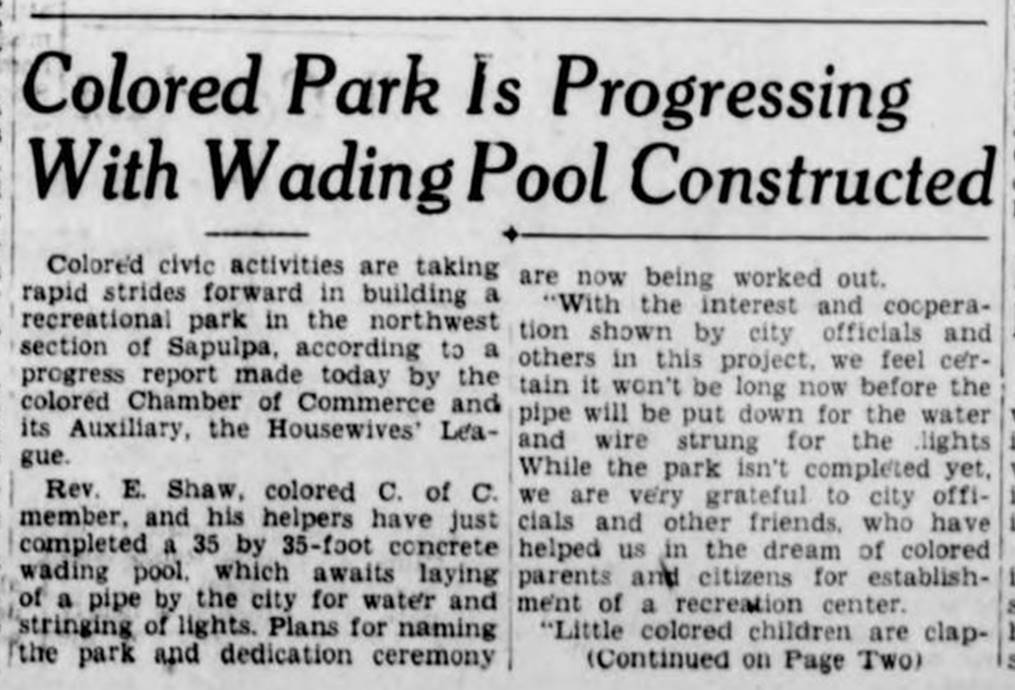
*Note: In the early history of public swimming pools in the United States, public pools were segregated by not only ethnicity but gender or class, as well. In the U.S., even after the Civil Rights Movement, some public pools closed not wanting to integrate. The availability of public pools in some areas were not available for the minority groups; instead lakes, rivers, and ponds were often used. The use of public pools were safer for everyone, with less accidental drownings.


